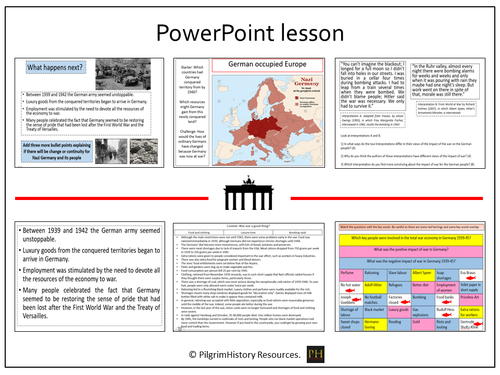


Germany 1890-1945: Democracy and Dictatorship
The aim of this lesson is to evaluate the problems the German people faced at home during World War II.
Students are given lots of contextual knowledge with challenging and exciting tasks aimed at answering the typical GCSE questions set in the exam.
They will judge how and why the war was a good thing for Germans at the beginning and why it became so bad as the war drew to a close.
There is some excellent information taken from the BBC Bitesize website which the students have to recall and analyse in a thinking quilt and summarising pyramid.
At the end of the lesson, the students will be ready to complete some GCSE questions with a simplified markscheme to help them.
The lesson is enquiry based with a key question using a lightbulb posed at the start of the lesson and revisited to show the progress of learning.
The resource includes suggested teaching strategies, retrieval practice, differentiated materials and comes in PowerPoint format if there is a wish to adapt and change.
Something went wrong, please try again later.
This resource hasn't been reviewed yet
To ensure quality for our reviews, only customers who have downloaded this resource can review it
Report this resourceto let us know if it violates our terms and conditions.
Our customer service team will review your report and will be in touch.